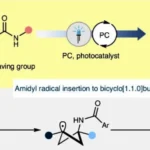Key Points
- A study found severe microplastic contamination in the Medina Estuary, a protected site on the Isle of Wight.
- Microfibres, making up 99% of detected particles, were present at all 16 sampled sites, primarily attributed to textile-based waste.
- The pollution levels of the Medina Estuary are twice as high as those of the estuaries in China and India.
- The study highlights the urgent need for better wastewater treatment and infrastructure investment to reduce pollution and protect ecosystems.
A recent study from the University of Manchester has exposed alarming levels of microplastic pollution in the Medina Estuary, a protected Site of Special Scientific Interest (SSSI) on the Isle of Wight. This research highlights severe microplastic contamination within the estuary’s intertidal mudflats, significantly risking its delicate ecosystems.
Conducted by Liberty Turrell for her undergraduate dissertation, the study involved collecting sediment samples from 16 different locations across the estuary’s mudflats at low tide. Under laboratory analysis, three primary types of microplastic particles were identified: fibres, fragments, and beads.
Microfibres, commonly originating from textiles and other synthetic materials, represented an overwhelming 99% of all microplastic particles found and were detected at each sampling site. Compared to other global estuaries, the median concentration of microplastics in the Medina Estuary was over twice as high as that observed in locations such as China and India.
The study found that wastewater discharge is a major source of this microplastic pollution. Two Combined Sewer Overflows (CSOs), Dodnor Lane and Fairlee, were identified as substantial contributors, discharging untreated wastewater for nearly 3,000 hours in 2023. As documented by the Environment Agency’s monitoring system, this translates to over 225 separate spill events, adding immense quantities of microplastic particles to the estuarine waters.
Jamie Marsh, Director of Nature Recovery at Hampshire & Isle of Wight Wildlife Trust, emphasized that microplastics are particularly dangerous for estuarine wildlife, such as wading birds, crustaceans, and fish. They can obstruct these organisms’ digestive systems, potentially leading to death.
According to Professor Jamie Woodward of The University of Manchester, effective wastewater treatment could remove up to 95% of microplastics before discharge, reducing the environmental impact. However, existing infrastructure appears insufficient, with microplastic contamination signaling failures in wastewater management. Across England, over 464,000 recorded spill events released contaminants into waterways in 2023, an increase of 54% from the previous year.
This study calls attention to the critical need for improved wastewater treatment and investment in infrastructure to address the escalating problem of sewage and microplastic pollution, not only on the Isle of Wight but globally. Researcher Liberty Turrell stated that the results indicate a “severe contamination issue” impacting estuarine environments, urging greater action to protect vulnerable ecosystems.











